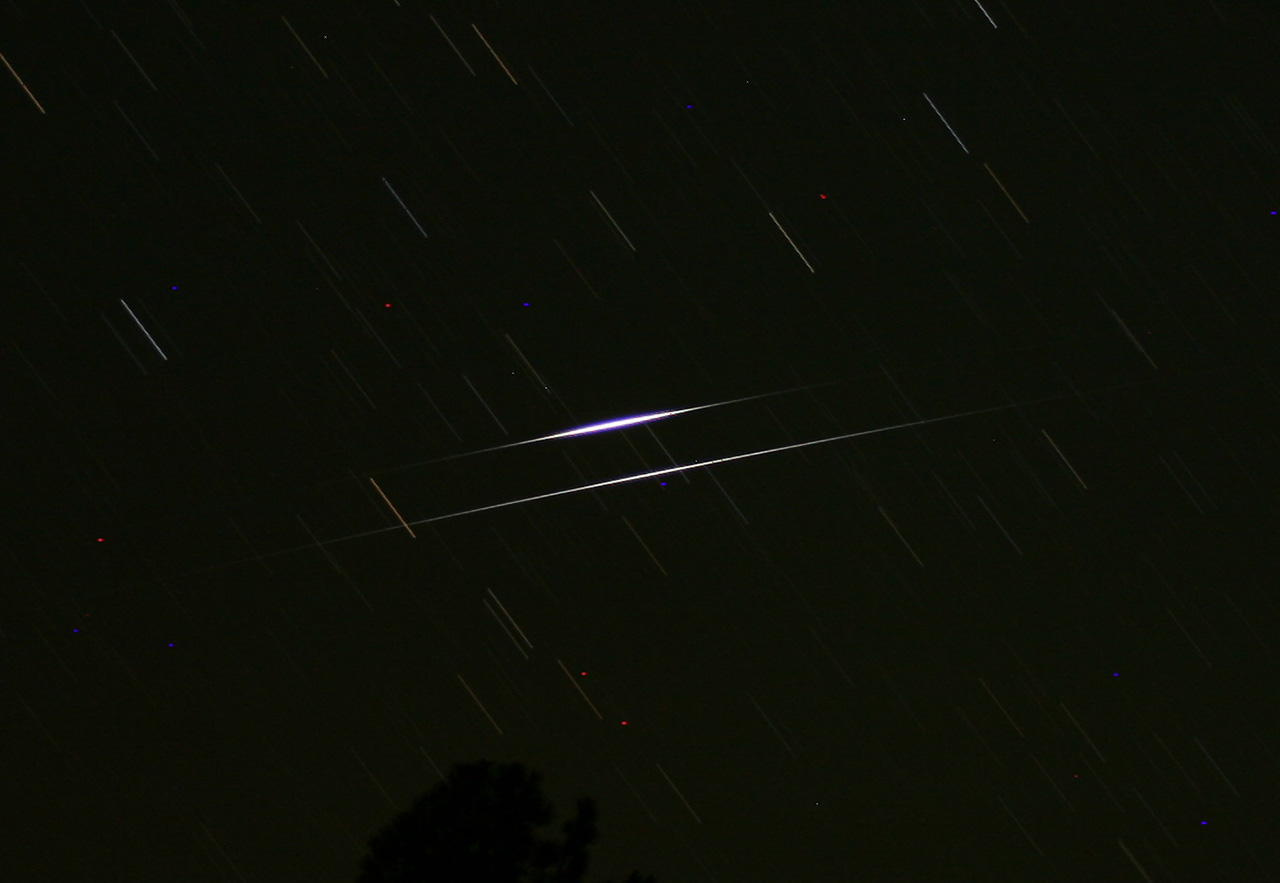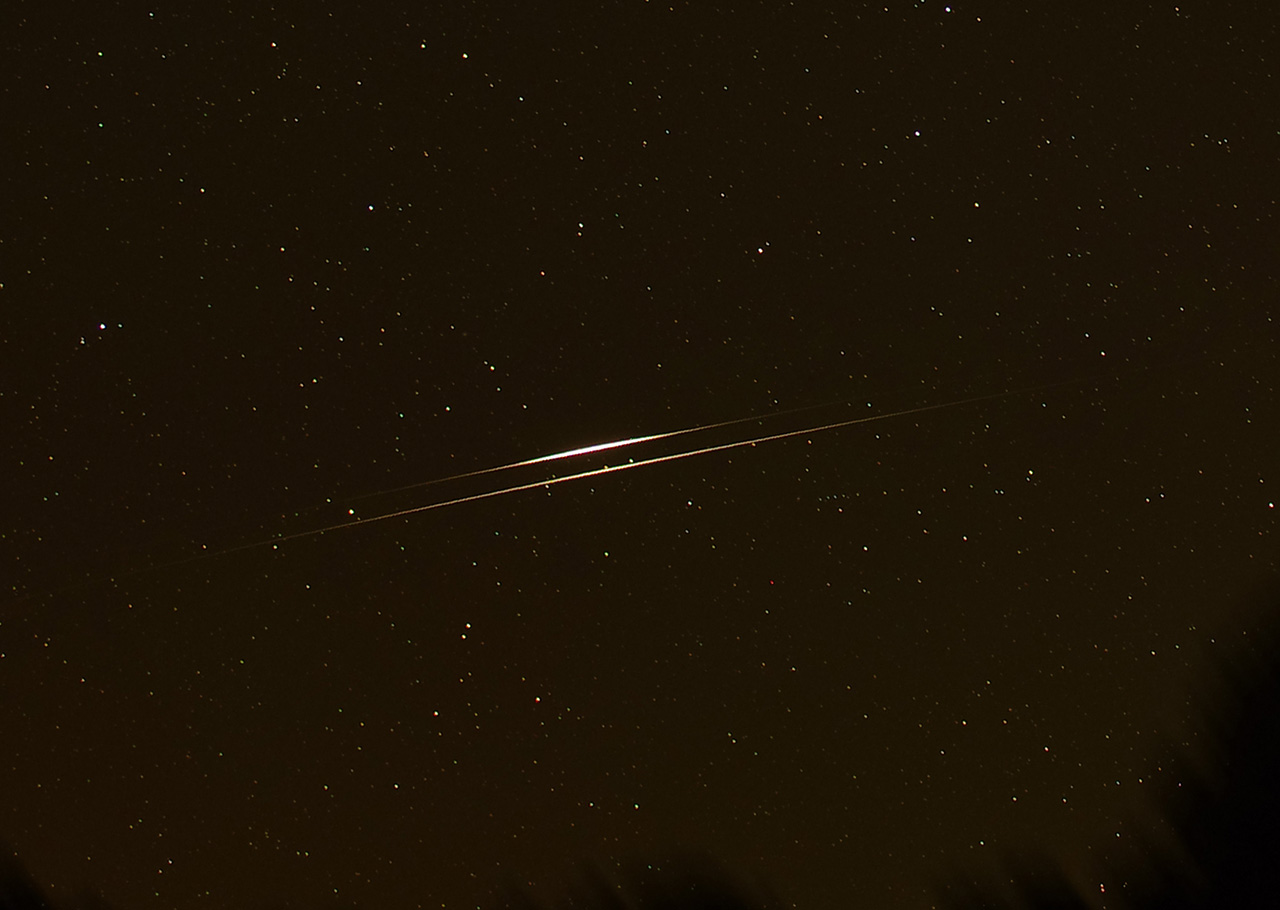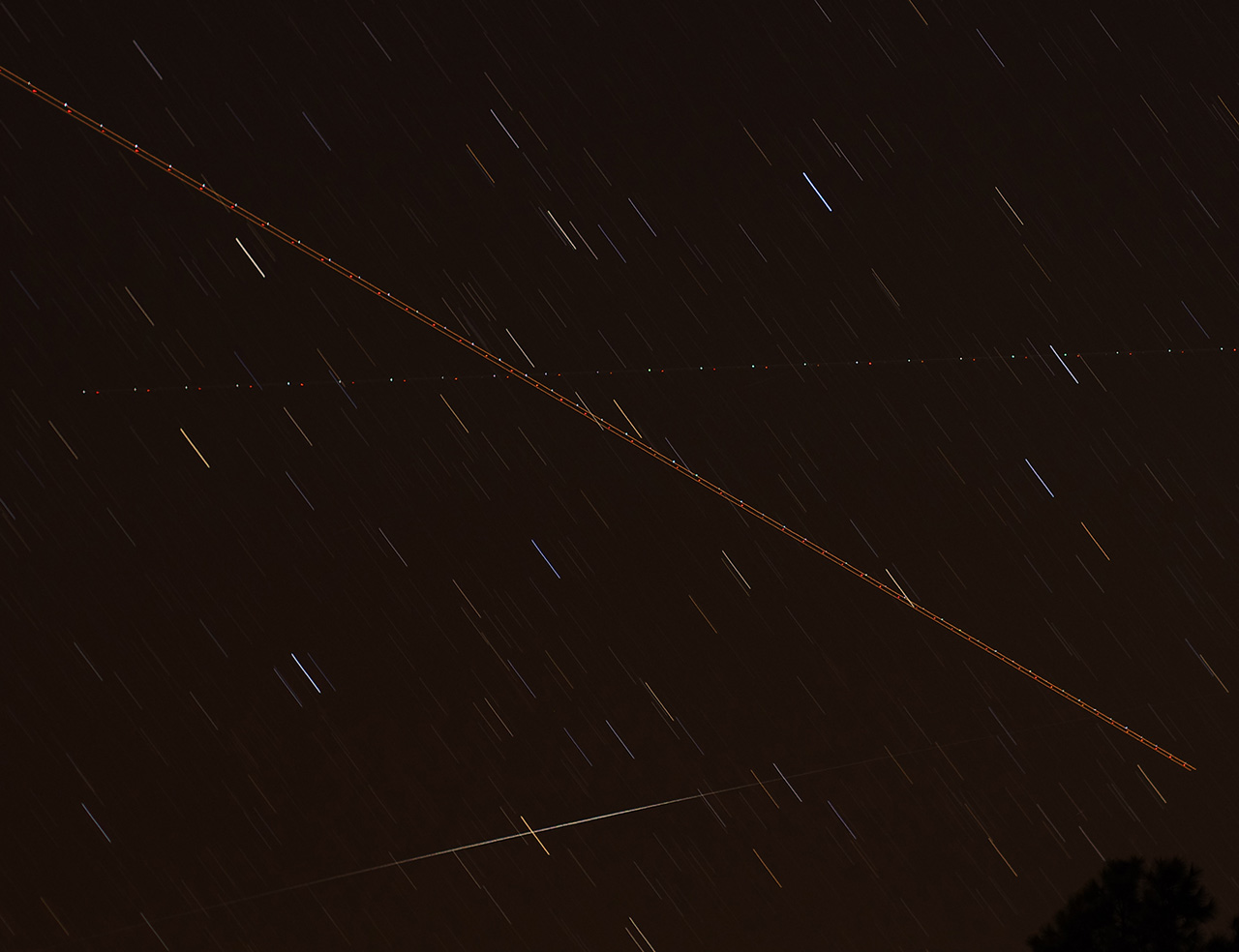Gifthorse (nice pix!!) beat me to some of this!
For even more fun, and something that can be done even from fairly bright sky locations, try taking time-lapse shots of either the Space Station soaring overhead, or Iridium flares (
Satellite flare - Wikipedia).
The Heavens-Above web site will give you the event timing:
Heavens-Above (for Yellowstone Park).
Click on either the ISS (International Space Station) or Iridium Flares options to see what will be visible in the next few days, from whatever location you have chosen.
Or for Yosemite Park:
Heavens-Above
Iíve found the site does a good job of knowing your local time (probably gotten from your computer), but pay a bit of attention to the time tags. Then, all you need to know is how to point close to the elevation and azimuth of the satellite tracks.
This is not as simple as it sounds! Azimuth - the angle from north through east and on around - is quite straightforward as long as you know where north (or any other compass point) is, but most folks arenít very good at estimating elevation! For example, ask somebody to ďpoint straight upĒ (i.e. elevation 90 degrees) - they will point to about 70 degrees at most. If you are pointing straight up, your arm will be BEHIND your head - you almost canít point that high!!
The Heavens-Above web site shows the expected brightness of a pass, in astronomersí units of magnitude. The magnitude scale is such that brighter values are smaller, or even (more) negative. An ISS pass at magnitude -2 or -3 will be quite bright, and an Iridium flare of magnitude -6 to -8 can be quite spectacular.
Here are are a few Iridium flashes from my collection of such shots. Typical exposures are a couple of minutes at ISO 200 or 400 and f4 to f8.
Iridium Flare pair - these two occurred within a few minutes of each other in almost the same place in the sky (rather rare!!). The first was made with a Rebel Xti on a fixed mount, while the second was with a K-5 on a tracking mount. The difference in the mounts causes the slight difference in spacing between the two flashes.


Sometimes you get other interesting things in the FoV - like the two airplanes which passed by during this shot

This 5-minute exposure was made during almost full moon and looks like a daylight exposure, despite the star trails and flare



 Similar Threads
Similar Threads 















 Post #2 by Aslyfox
Post #2 by Aslyfox








